Avro Anson RAAF A4-19 over Sydney Australia 01
Avro Anson I, A4-19. Forty-eight aircraft of this type were ordered by the RAAF for general reconnaissance and bombing duties. (Australian War Memorial).
Avro Anson RAAF A4-5 over Australia 1941 01
A trio of Anson I's in flight over Australia prior to Japan's entry into the war. (Australian War Memorial).
Avro Anson RAAF 13Sqn N R3337 over Cootamundra NSW Australia 1940
Anson I diverted from RAF contracts and retaining its British serial number, R3337. This No. 13 Squadron's aircraft is seen in flight over Cootamundra, N.S.W., in 1940.
Avro Anson RAAF 1APU AX113 Laverton Victoria Australia 1944
Photographed at Laverton, Victoria, in 1944 this Anson I was operated by No. 1 A.P.U. (Aircraft Performance Unit).
Avro Anson RAAF 5SFTS N4960 forced landing Uranquinty NSW Australia 1945
N4960, an ex-RAF Anson I, operated by No. 5 S.F.T.S. (Service Flying Training School) after a forced landing at Uranquinty, N.S.W., in 1945. (RAAF Official).
Avro Anson RAAF 67Sqn MKE W1589 MK-D AX424 MK-J DJ330 MK-X Laverton Victoria 1945
Line-up of Anson I's operated in 1945 for reconnaissance and anti-submarine patrol from Laverton, Victoria, by No. 67 Squadron.
The Royal Australian Air Force During the Pacific War
On the eve of the Japanese seven-point assault against Allied forces in Hawaii, Wake Island, Guam, the Philippines, Hong Kong, Thailand and Malaya, the Royal Australian Air Force had on strength 536 combat aircraft distributed as follows:
Malaya/Singapore
28 Buffaloes, 24 Hudsons, 1 Beaufort
Australia — Front-line units
101 Wirraways, 53 Hudsons, 11 Seagulls, 12 Catalinas
Australia — Reserve units
72 Battles, 108 Wirraways, 126 Ansons
of which the only fighter aircraft were the twenty-eight obsolescent Buffaloes of Nos. 21 and 453 Squadrons.
In spite of combat losses and other attritions the RAAF slowly increased its strength by absorbing aircraft belonging to Allied units retreating from Southeast Asia, by impressing Australian civilian light aircraft and transports and by taking delivery of domestically produced aircraft. However, the main sources of aircraft operated by the RAAF during the Pacific War were the American and, to a lesser extent, British aircraft industries. As a result of this steady flow of aircraft Australia ended the war with the fourth largest Allied Air Force—after the United States, the USSR and the United Kingdom.Most aircraft operated by the RAAF at home and in the Southwest Pacific during the war bore identification numbers assigned in compliance with provisions of the Australian Air Board's agenda No. 121 of 12 August 1921. A first series of identification numbers were assigned by the RAAF between 1921 and 1935 but a second series was introduced in 1935 and remained in use until 1961. These identification numbers were suffixed by the letter "A" and comprised two sets of digits. The first set of digits identified the aircraft type whilst the second set identified the individual aircraft within a type (e.g., A65-10 indicated that the aircraft bearing it was the tenth machine of the 65th type of aircraft—the Douglas Dakota—in the second series of identification numbers; in this instance A65-10 was a C-47A 30-DL, ex USAAF serial 42-23728, s/n 9590).
A listing of RAAF identification numbers covering all types of aircraft operated during the Pacific War from the A1 Hawker Demon to the A72 Consolidated Liberator follows:
A1 HAWKER DEMON
A1-1 to A1-54
Fifty-four Demon I's ordered as fighter bomber and army cooperation aircraft; a number of aircraft from this batch were later modified as two-seat trainers; first delivered in 1935.
A1-55 to A1-64
Ten Demon II's ordered as target-towing and training aircraft; no rear defense gun.
A2 SUPERMARINE SEAGULL V (WALRUS)
A2-1 to A2-24
Twenty-four aircraft ordered by Australia as Seagull V's; similar to the Walruses ordered by the RAF; first delivered in 1935.
Thirty-seven Walruses diverted from RAF contracts and retaining their British serial numbers; delivered during the war.
A3 DE HAVILLAND D.H.89 DRAGON RAPIDE
A3-1
One aircraft acquired in August 1935 and resold to Holyman Airways in December of that year; impressed back in 1940 as A33-3.
A3 CAC CA-2 WACKETT TRAINER
A3-1 & A3-2 (A3-1001 & A3-1002)
Two prototypes of an Australian designed intermediate trainer powered by a 200 hp DH Gipsy Six; later renumbered A3-1001 and A3-1002; first flown on 19 October 1939.
A3 CAC CA-6 WACKETT TRAINER
A3-1 to A3-200
Two hundred intermediate trainers; production version of CA-2 (see above) powered by a 175 hp Warner Super Scarab; delivered in 1941 and 1942.
A4 AVRO ANSON
A4-1 to A4-48
Forty-eight Anson I's ordered by Australia for general reconnaissance and bombing duties; first delivered in 1937.
980 Ansons from various marks were also diverted from RAF contracts and retained their British serial numbers; 934 of these were Anson T.l's and were used as trainers under the Empire Air Training Scheme.
A5 WESTLAND WAPITI
A5-1 to A5-28
Twenty-eight aircraft ordered by Australia as Wapiti lA's; later brought up to Wapiti IIA standard; first delivered in 1929; surviving Wapitis were used as trainers and for ancillary duties during the early war years.
A5-29 to A5-43
Fifteen Wapiti IIA's acquired from the RAF for training.
A6 AVRO CADET
A6-1 to A6-34
Thirty-four Cadet II's acquired between 1935 and 1939; operated throughout the war as intermediate trainers.
A7 DE HAVILLAND D.H.60
A7-1 to A7-122
One hundred twenty-two D.H.60 Cirrus I Moth, D.H.60X Cirrus 11/111 Moth, D.H.60G Gipsy Moth, D.H.60M Metal Moth and D.H.60G III Moth Major were operated by the RAAF between 1926 and 1946.
A8 D.A.P. BEAUFIGHTER
A8-1 to A8-364
364 Beaufighter 21's were built in Australia by D.A.P. (Department of Aircraft Production); first flown on 26 May 1944.
A9 D.A.P. BEAUFORT
A9-1001
Eighth Bristol-built Beaufort I (L4448) used as prototype for the Australian-built Beauforts.
A9-1 to A9-50
Fifty Beaufort V's powered by Australian-built Pratt & Whitney R-1830-S3C4-G engines; first delivered in 1941.
A9-51 to A9-90
Forty Beaufort VI's with imported engines. A9-91 to A9-150
Sixty Beaufort VII 's with imported engines, new propellers and enlarged vertical fin.
A9-151 to A9-180
Thirty Beaufort VA's similar to Beaufort VII 's but fitted with Australian-built engines.
A9-181 to A9-700
520 Beaufort VIII's; improved version of Beaufort VA remaining in production until August 1944.
A9-701 to A9-746
Forty-six Beaufort IX's; these were transport aircraft modified from existing Beaufort VIM airframes at the Essendon Repair and Modification Centre.
A10 DE HAVILLAND D.H.50A
A10-1
One civilian D.H.50A (registration VH-UAB) impressed in November 1942; powered by a 450 hp Pratt & Whitney Wasp Ñ radial engine.
A11 TAYLORCRAFT AUSTER
A11-1 to A11-56
Fifty-six Auster AOP Mk III's delivered to the RAAF starting in 1944.
A11-100 & A11-101
Two Auster AOP Mk V's. A11-200 & A11-201
Two Auster AOP Mk 6's operated by the RAAF during the 1953-1954 Antartic Expedition.
A12 BRISTOL BULLDOG
A12-1 to A12-8
Eight Bulldog IIA's delivered to the RAAF in 1930; three surviving Bulldogs were used as instructional airframes during the war.
A13 LINK TRAINER
To avoid possible superstitious fears, the A13 identification number was not assigned to an aircraft type but used for ground link trainers.
A14 WACKETT GANNET
A14-1 to A14-7
Seven twin-engined light transports designed by Wg Cdr Wackett and built by Tugan Aircraft Co. and Commonwealth Aircraft Corp., Pty; first delivered in 1935.
A15 MILES MAGISTER
A15-1
One Magister delivered to the RAAF in June 1938 and used as an instructional airframe during the war.
A16 LOCKHEED HUDSON
A16-1 to A16-50
Fifty Hudson I's from original RAAF order placed in late 1938; first delivery on 9 February 1940.
A16-51 to A16-100
Fifty Hudson II's from second RAAF order.
A16-101 to A16-152
Fifty-two Hudson IVA's diverted from USAAF contracts; ex USAAF's Lockheed A-28's, serials 41-23171 to 41-23222. A16-153 to A16-247
Ninety-five Hudson IMA's diverted from RAF contracts.
A17 DE HAVILLAND D.H.82 TIGER MOTH
A17-1 to Al 7-861
A total of 861 Tiger Moths were operated by the RAAF and RAN between 1940 and 1957; these included 732 Australian-built D.H.82A's, 21 civilian D.H.82 impressed and 108 British-built Tiger Moths.
A18 SHORT SUNDERLAND AND SHORT EMPIRE
A18-1 to A18-9
Identification numbers reserved for nine Sunderlands ordered by the RAAF in 1939; eventually, these aircraft were delivered to No. 10 Squadron, RAAF, in Great Britain and were assigned RAF serial numbers on delivery.
A18-10 to A18-14
Five civilian Empire Class flying-boats impressed by the RAAF; A18-10, ex G-ADUT "Centaurus", A18-11, ex G-AEUA "Calypso", A18-12,ex VH-ABC "Coogee" and A18-13, ex VH-ABB "Coolangatta" were S23's; A18-14, ex G-AFPZ "Clifton" was an S33.
A19 BRISTOL BEAUFIGHTER (British-built)
A19-1 to A19-72
Seventy-two Fairey-built and Bristol-built Beaufighter I's; A19-2 was fitted in Australia with Wright Cyclone GR-2600-A5B radial engines.
A19-73 to A19-136
Sixty-four Beaufighter VIC's.
A19-149 to A19-150 A19-153 to A19-155 A19-159 A19-162 A19-164 to A19-218
Sixty-two Beaufighter X's.
A19-137 to A19-148 A19-151 & A19-152 A19-156 to A19-158 A19-160 & A19-161 A19-163
Twenty Beaufighter XIC's.
A20 CAC WIRRAWAY
A20-1
One North American NA-16-1A with fixed undercarriage.
A20-2
One North American NA-16-2K (NA-33) with retractable undercarriage; served as prototype for the Australian-built Wirraways.
A20-3 to A20-42
Forty CAC (Commonwealth Aircraft Corp.)-built CA-1 Wirraways; first flown on 27 March 1939.
A20-43 to A20-102
Sixty CA-3 Wirraways; improved version of CA-1.
A20-103 to A20-134
Thirty-two CA-5 Wirraways; improved version of CA-3.
A20-135 to A20-234
One hundred CA-7 Wirraways; improved version of CA-5.
A20-235 to A20-434
Two hundred CA-8 Wirraways; improved version of CA-7.
A20-435 to A20-622
One hundred eighty-eight CA-9 Wirraways; improved version of CA-8.
A20-623 to A20-757
One hundred thirty-five CA-16 Wirraways; improved version of CA-9 specially intended for dive bombing duties.
A21 DE HAVILLAND D.H.94 MOTH MINOR
A21 1 to A21-42
Forty-two Moth Minors were operated by the RAAF following the delivery of A21-1 on 26 January 1940; most of these aircraft were specially built in Australia for use by the RAAF but a number of civilian Moth Minors were impressed.
A22 FAIREY BATTLE
366 Battles, including a number of two-seat trainers, were delivered to the RAAF for training and target towing duties; these were ex-RAF aircraft and retained their British serial numbers.
A23 CAC WOOMERA
A23-1001
Prototype of an Australian designed and built twin-engined general-reconnaissance and attack bomber aircraft; first flown on 19 September 1941. CAC CA-4 Woomera.
A23-1
One CA-11 production aircraft; neither the CA-11 nor its CA-11 A version were continued as sufficient supplies of American aircraft became available.
A24 CONSOLIDATED CATALINA
A24-1 to A24-18
Eighteen Consolidated Model 28-5MA's ordered in 1940 by the Australian Government.
A24-19 to A24-27
Nine Model 28 5MC's built by Canadian Vickers and diverted from RCAF contracts.
A24-28
One ex Dutch PBY-3 brought to PBY-5 standard.
A24-29 & A24-30
Two ex US Navy PBY-5's acquired in 1942.
A24-31 to A24-68
Thirty-eight PBY-5's.
A24-69 to A24-114
Forty-six amphibian PBY-5A's.
A24 200 to A24-206
Seven Boeing-built PB2B-1's.
A24-300 to A24-309
Ten Boeing-built PB2B-2's.
A24 350 to A24-386
Thirty-seven Boeing-built PB2B-2R's.
A25 AIRSPEED OXFORD
Although the prefix A35 was allocated for RAAF use, all 391 Oxford Mk. I's and Mk. II's delivered for use under the Empire Air Training Scheme retained their original British serial numbers. The first aircraft, P6878, was delivered on 28 October 1940 and the last, LW999, was received on 20 March 1944.
A26 SHORT SUNDERLAND
A26-1 to A26-6
Six Sunderland III's operated by the RAAF beginning in 1944. See also A18-1 to A18 9.
A27 VULTEE VENGEANCE
A27-1 to A27-15
Fifteen Vultee-built Vengeance I's (A-31-VN); first delivered to the RAAF on 30 May 1942.
A27-16 to A27-99
Eighty-four Northrop-built Vengeance IA's (A-31-NO).
A27-200 to A27-321
One hundred twenty-two Vultee-built Vengeance II's (A-31-VIM) and Northrop-built Vengeance IIA's (A-31-NO).
A27-400 to A27-422
Twenty-three Vultee-built Vengeance IVA's (A-35A-VN).
A27-500 to A27-549
Fifty Vultee-built Vengeance IV's (A-35B-5-VN).
A27-560 to A27-566
Seven Vultee-built Vengeance IV's (A-35B-10-VN).
A27-600 to A27-640
Forty-one Vultee-built Vengeance IV's (A-35B-15-VN).
A28 DOUGLAS BOSTON
A28-1 to A28-22
Twenty-two Boston III's diverted from RAF contracts.
A28-23 to A28-31
Nine A-20C's diverted from USAAF contracts. A28-32 to A28-40
Nine A-20A's diverted from USAAF contracts. A28-50 to A28-77
Twenty-eight A-20G's diverted from USAAF contracts. A28-78
One A-20J-20-DO from USAAF.
A29 CURTISS KITTYHAWK
A29-1 to A29-163
One hundred sixty-three Kittyhawk lA's (P-40E).
A29-164 to 29-202
Thirty-nine Kittyhawk III's (P40K-10-CU).
A29-203 to A29-205
Three Kittyhawk III's (P-40K-15-CU).
A29-300 to A29-389
Ninety Kittyhawk III's (P-40M-5-CU and P-40M-10-CU).
A29-400 to A29-414
A29-420 to A29-434
A29-443 to A29-460
A29-473 to A29-502
Seventy-eight Kittyhawk IV's (P-40N-T-CU).
A29-415 to A29-419
A29-435 to A29-442
A29-461 to A29-472
A29-503 to A29-541
A29-559 to A29-563
A29-577 to A29-587
Eighty Kittyhawk IV's (P-40N-5-CU).
A29-542 to A29-558 A29-564 to A29-576
Thirty Kittyhawk IV's (P-40N-15-CU). A29-600 to A29-704
One hundred five Kittyhawk IV's (P-40N-20-CU). A29-800 to A29-811 A29-819 to A29-828
Twenty-two Kittyhawk IV's (P-40N-25-CU). A29-900 to A29-928
Twenty-nine Kittyhawk IV's (P40N-30-CU). A29-1000 to A29-1079 Eighty Kittyhawk IV's (P-40N-35-CU).
A29-1100 to A29-1221
One hundred twenty-two Kittyhawk IV's (P-40N-40-CU).
A30 DOUGLAS
DC-3 AND DC-2 A30-1 to A30-4
Four ex Australian National Airways DC-3's impressed by the RAAF between September 1939 and mid-1940.
A30-5 to A30-14
Ten ex Eastern Air Lines DC-2's imported in Australia in 1940/1941 for use by the RAAF.
A31 DE HAVILLAND D.H.86
A31-1 to A31-8
Six D.H.86's (A31-2 to A31-7) and two D.H.86B's (A31-1 and A31-8) impressed by the RAAF.
A32 PERCIVAL VEGA GULL
A32-1 and A32-2
Two Vega Gulls impressed by the RAAF in early 1940.
A33 DE HAVILLAND D.H.89 DRAGON RAPIDE
A33-1 to A33-7
Seven Dragon Rapides, previously belonging to Guinea Airways, Airlines of Australia and Australian National Airways, impressed by the RAAF in 1940.
A34 DE HAVILLAND D.H.84 DRAGON
A34-1 to A34-11
Eleven Dragons impressed by the RAAF in 1940/1941.
A34-12 to A34-98
Eighty-seven Dragons built for the RAAF by de Havilland Aircraft Pty. Ltd. in Australia between 1942 and 1943.
A35 DOUGLAS DOLPHIN
A35-1 to A35-4
Four Dolphins taken on strength by the RAAF between 1940 and 1943.
A36 FAIRCHILD 24
A36-1 to A36-4
Three Fairchild 24R's (A36-1, -2 and -4) and one Fairchild 24G (A36-3) impressed by the RAAF.
A37 MILES
A37-1 to A37-6
Six Mites three/four-seat communication aircraft taken on strength by the RAAF in 1940/1942; these included one M3D Falcon Six (A37-1), one M4 Merlin (A37-2), two M3A Falcon Majors (A37-3 and -6) and two M2H Hawk Majors (A37-4 and -5).
A38 STINSON RELIANT
A38-1
One Stinson Reliant SR-8B (ex VH-UXL) impressed by the RAAF in February 1941.
A39 BEECHRAFT 17
A39-1 to A39-3
Three aircraft impressed into the RAAF in 1941-42 as follows: one F-17D (A39-1, ex VH-ACU), one D-17 (A39-2, ex NC20778) and one C-17B (A39-3, ex VH-UXP).
A40 CESSNA AIRMASTER
A40-1
One Cessna Airmaster (ex VH-UYG) impressed into the RAAF in 1941.
A41 DE HAVILLAND D.H.83 FOX MOTH
A41-1 to A41-4
Four Fox Moths impressed into the RAAF in 1941-43.
A42 LOCKHEED VEGA
A42-1
One Vega (ex VH-UVK) impressed into the RAAF in 1941.
A43 DE HAVILLAND D.H.90 DRAGONFLY
A43-1
One Dragonfly (ex VH-UXS) impressed into the RAAF in 1942.
A44 JUNKERS G 31 AND W 34
A44-1 to A44-3
Three civilian Junkers transport aircraft impressed into the RAAF in 1942 and including one three-engined G 31 (A44-1, ex VH-UOW), one single-engined W 34f (A44-2, ex VH-UOX) and one single-engined seaplane W 34d (A44-3, ex VH-UNM).
A45 FORD TRIMOTOR
A45-1 to A45-2
Two Ford Trimotors impressed into the RAAF in 1942 and including one 5-AT-C (A45-1, ex VH-UBI) and one 4-AT-E (A45-2, ex VH-UDY).
A46 CAC BOOMERANG
A46-1 to A46-105
One hundred five CA-12 Boomerangs; first combat aircraft designed and built in Australia; first flown on 29 May 1942.
A46-106to A46-200
Ninety-five CA-13 Boomerangs.
A46-201 to A46-249
Forty-nine CA-19 Boomerangs.
A46-1001
One experimental aircraft fitted with a turbo-supercharged engine; first completed as a CA-14 and, later, modified as a CA-14A.
A47 NORTH AMERICAN MITCHELL
A47-1 to A47-25 A47-33 to A47-39
Thirty-two B-25D's; first accepted by the RAAF on behalf of the Dutch Government and transferred to the RAAF in 1944.
A47-26 to A47-32 A47-40 to A47-50
Eighteen B-25J's; seven of these aircraft were also originally accepted on behalf of the Dutch Government.
A48 VOUGHT KINGFISHER
A48-1 to A48-18
Eighteen Kingfishers delivered to the RAAF in 1942 for training and anti-submarine patrol duties.
A49 DORMIER Do 24K
A49-1 to A49-6
Six Do 24K's transferred from the Dutch East Indies Navy in 1942.
A50 RYAN STM
A50-1 to A50-34
Thirty-four STM primary trainers evacuated from Java by the Royal Netherlands Indies Air Corps were absorbed into the RAAF in 1942.
A51 BREWSTER BUFFALO
A51-1 to A51-17
Seventeen Buffaloes delivered to the RAAF in 1942 for home defense; in addition a substantial number of Buffaloes--which retained their RAF serial numbers—were operated by Nos. 21 and 453 Squadrons for the defense of Malaya and Singapore.
A52 DE HAVILLAND D.H.9S MOSQUITO
A52-1 to A52-212
Two hundred twelve Australian-built Mosquito FB Mk 40's; first flown on 26 May 1944; of these aircraft, six were modified as PR Mk 40's, twenty-eight as PR Mk 41 's and twenty-two as T Mk 43's as detailed below; in addition A52-90 became the sole FB Mk 42 prior to becoming the first PR Mk 41 (A52-300).
A52-2, -4, -6, -7, -9 and -26
Six FB Mk 40's converted for photo-reconnaissance as PR Mk 40's; retained their original identification numbers.
A52-300 to A52-327
Twenty-eight PR Mk 41's modified from FB Mk 40 airframes and assigned new identification numbers.
A52-500 to A52-537
Thirty-eight British-built FB Mk VI's.
A52-600 to A52-622
Twenty-three British-built  Mk XVI 's.
A52-1001
One ex-RAF Mosquito F Mk II (DD664) used as prototype for Australian-built aircraft.
A52-1002 to A52-1015
Fourteen British-built T. Mk.III's. A52-1050 to A52-1071
Twenty-two T Mk 43's modified from FB Mk 40 airframes and assigned new identification numbers.
A53 BELL AIRACOBRA
A53-1 to A53-22
Twenty-two P-39D's and P-39F's transferred from the USAAF in 1942/1943; with the exception of four aircraft which had been written off in training accidents, all Airacobras were returned to the USAAF as early as November 1943.
A54 WACO
A54-1
One Waco YOC-6 (ex VH-UVW) impressed by the RAAF in 1942.
A55 LOCKHEED LIGHTNING
A55-1 to A55-3
Three F-4-1-LO's transferred from the USAAF in August and September 1942.
A56 REPUBLIC LANCER
A56-1 to A56-S
Four P-43A 1-RE's (A56-3 to A56-6) and four P-43D-1-RE's (A56-1, -2, -7 and -8) transferred from the USAAF for photo-reconnaissance duties with the RAAF.
A57 DE HAVILLAND DHA-G1 AND DHA-G2
A57-1001 to A57-1002
Two prototypes of the Australian-built DHA-G1 transport glider. A57-1 to A57-6
Six DHA-G2 gliders; modified production version of the DHA-GI.
A58 SUPERMARINE SPITFIRE
A58-1 to A58-185 A58-200 to A58-259
Two hundred forty-five Spitfire Mk Vc's; first delivered to the RAAF in August 1942. A58-300 to A58-550
Two hundred fifty-one Spitfire Mk VIII's. A58-600 to A58-758
One hundred fifty-nine Spitfire H.F. Mk VIII's.
A59 LOCKHEED VENTURA
A59-1 to A59-20
Twenty Lockheed B-34's delivered to the RAAF under lend-lease arrangement; first delivery on 18 May 1943.
A59-50 to A59-63
Fourteen Lockheed PV-1's delivered to the RAAF under lend-lease.
A59-64 to A59-104
Forty-one Lockheed B-37's delivered to the RAAF under lend-lease.
A60 HAWKER HURRICANE
The A60 identification number was reserved by the RAAF for the Hawker Hurricane; in the event this number was not taken up as only one Hurricane I was delivered to that Service in 1941; the aircraft retained its British serial number (V7476).
A61 NORTHROP DELTA
A61-1
One Northrop Delta 1D impressed in 1942. A62 CAC CA-15
A62-1001
One experimental Australian-built fighter aircraft; first flown on 4 March 1946, the CA-15 reportedly reached a top speed of 502.2 mph on 25 May 1948.
A63 CELESTIAL NAVIGATION TRAINER
This was not an aircraft but a ground instructional device.
A64 VULTEE VIGILANT
The A64 identification number was reserved by the RAAF for the Vultee Vigilant but was not used; however, three aircraft of this type were loaned to the RAAF by the USAAF for a brief period.
A65 DOUGLAS DAKOTA
A65-1,-3 and -4
Three C-47-DL's; first used by the RAAF in early 1943.
A65-2, and A65-5 to A65-59
Fifty C-47A-DL's and C-47A-DK's. A65-60 to A65-124 Sixty-five C-47B-DK's.
In addition twenty-four C-47's, C-49's, C-50's and C-53's were operated on loan from the USAAF; no RAAF identification numbers were allocated to these aircraft.
A66 AVRO LANCASTER
A66-1 & A66-2
Two Lancasters were sent to Australia for use in war-bond drives and recruiting campaign; A66-1, ex British serial number ED930, was a new Lancaster III while A66-2, ex British serial number W4783, was a Lancaster I which had flown ninety operational sorties with No. 460 Squadron, RAAF, in Europe.
A67 LOCKHEED LODESTAR
A67-1 to A67-10
Ten Lodestar I's delivered to the RAAF in 1943-44. Five Lodestar I's on loan from the Netherland East Indies; no RAAF identification numbers. Three Lockheed C-60A's (Lodestar II's) on loan from the USAAF; no RAAF identification numbers.
A68 CAC AND NORTH AMERICAN MUSTANG
A68-1 to A68-80
Eighty Australian-built (CAC) Mustang XX's; first flown on 29 April 1945. A68-95 to A68-120 Twenty-six CAC Mustang XXI's.
A68-81 to A68-94 A68-187 to A68-200
Twenty-eight photo-reconnaissance CAC Mustang XXII's.
A68-121 to A68-186
Eighty-six CAC Mustang XXIII's.
A68-500 to A68-583
Eighty-four North American Mustang IVA's (P-51K-NT's).
A68-600 to A68-699
One hundred North American Mustang IV's (P-51D-20-NT's).
A68-700 to A68-813
One hundred fourteen North American Mustang I V's (P-51D-25-NT's).
A69 CURTISS SHRIKE
A69-1 to A69-10
Ten Curtiss A-25A's received by the RAAF in November 1943; nine of these aircraft were returned to the USAAF within a mere three months.
A70 MARTIN MARINER A70-1 to A70-12
Twelve PBM-3R's delivered to the RAAF in late 1943.
A71 NOORDUYN NORSEMAN
A71-1 to A71-14
Fourteen Norsemen acquired by the RAAF in late 1943.
A72 CONSOLIDATED LIBERATOR
A72-1 to A72-13
Thirteen B-24D's acquired from the USAAF in early 1944 for training purposes.
A72-31 to A72-68
A72-300 to A72-405
One hundred forty-four B-24J's delivered in 1944.
A72-69 to A72 142
A72-149 to A72-157
Eighty-three B-24L's.
A72-143 to A72-148
A72-158 to A72-198
Forty-seven B-24M's.
Beginning with A73 all identification numbers were assigned after V-J Day and thus do not qualify for inclusionCodes assigned by the RAAF to units operating during the Pacific War
Codes assigned by the RAAF to units operating during the Pacific War Code Unit Code Unit AM No. 77 Sqn NA No. 1 Sqn BF No. 5 Sqn NF No. 16 A.O.P. Flight BK No. 35 Sqn NH No. 12 Sqn BT No. 33 Sqn NJ No. 73 Sqn BU No. 80 Sqn MR No. 113 A.S.R. Flight BV No. 102 Sqn NV No. 23 Sqn DB No. 3 Comm Unit NX No. 200 Flight DD No. 15 Sqn OB No. 92 Sqn DQ No. 41 Sqn OM No. 37 Sqn DU No. 22 Sqn OX No. 43 Sqn EH No. 31 Sqn PK No. 38 Sqn EV No. 1 Comm Unit PN No. 14 Sqn EY No. 60 Sqn PP No. 71 Sqn FA No. 82 Sqn OE No. 4 Sqn FD No. 34 Sqn QH No. 100 Sqn FJ No. 11 Sqn QK No. 87 Sqn FX No. 6 Sqn QY No. 452 Sqn GA Nos. 21 and 75 Sqn RB No. 20 Sqn GR No. 24 Sqn RE No. 36 Sqn HF No. 40 Sqn RK No. 42 Sqn HM No. 11 Comm Unit SF No. 13 Sqn HU No. 78 Sqn SH No. 85 Sqn IJ No. 112A.S.R. Flight SJ No. 25 Sqn JE No. 107 Sqn SK No. 93 Sqn JM No. 32 Sqn SU Survey Flight JN No. 66 Sqn SV No. 76 Sqn JU No. 2 Comm Unit TA No. 12 L.A.S.U. KF No. 5 Comm Unit TD No. 453 Sqn ÊÎ No. 2 Sqn TX No. 9 L.A.S.U. KP No. 111 A.S.R. Flight UB No. 10 L.A.S.U. KT No. 7 Sqn UP No. 79 Sqn KV No. 17 A.O.P. Flight US No. 8 Sqn LB No. 84 Sqn UV No. 8 Sqn LV No. 201 Flight UX No. 99 Sqn LY No. 30 Sqn VM No. 4 Comm Unit MH No. 83 Sqn XJ No. 6 Comm Unit MJ No. 21 Sqn YB No. 7 Comm Unit MK No. 67 Sqn YQ No. 9 Sqn MP No. 86 Sqn ZA No. 8 Comm Unit ZP No. 457 Sqn Sqn - Squadron
Comm Unit - Communication Flight
A.S.R. Flight - Air Sea Rescue Flight
A.O.P. Flight - Air Observation Post Flight
L.A.S.U. - Local Air Supply Unit
Bibliography:
Magazine References: +
- Airfix Magazines (English) - http://www.airfix.com/
- Avions (French) - http://www.aerostories.org/~aerobiblio/rubrique10.html
- FlyPast (English) - http://www.flypast.com/
- Flugzeug Publikations GmbH (German) - http://vdmedien.com/flugzeug-publikations-gmbh-hersteller_verlag-vdm-heinz-nickel-33.html
- Flugzeug Classic (German) - http://www.flugzeugclassic.de/
- Klassiker (German) - http://shop.flugrevue.de/abo/klassiker-der-luftfahrt
- Le Fana de L'Aviation (French) - http://boutique.editions-lariviere.fr/site/abonnement-le-fana-de-l-aviation-626-4-6.html
- Le Fana de L'Aviation (French) - http://www.pdfmagazines.org/tags/Le+Fana+De+L+Aviation/
- Osprey (English) - http://www.ospreypublishing.com/
- Revi Magazines (Czech) - http://www.revi.cz/
Web References: +
- History of RAF Organisation: http://www.rafweb.org
- History of RAAF: http://www.airpages.ru/eng/ot/raaf_01.shtml
- Wikipedia, the free encyclopedia: http://en.wikipedia.org/
 Editor for Asisbiz: Matthew Laird Acred
Editor for Asisbiz: Matthew Laird Acred
If you love our website please donate so we can make this site even better !!


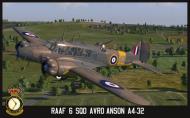

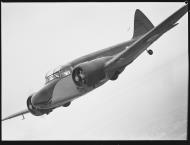
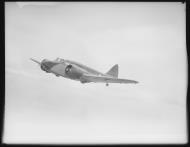




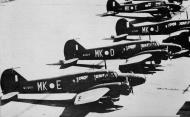
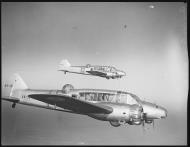
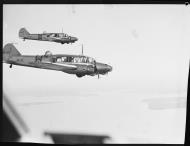
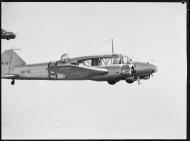
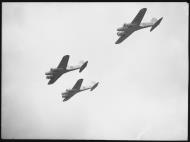


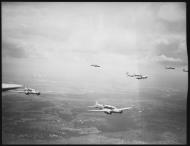
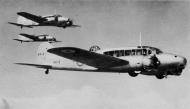
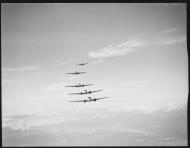
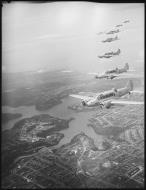
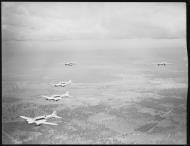
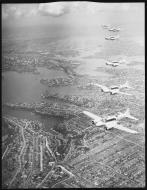
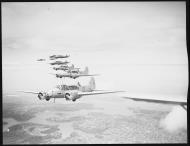
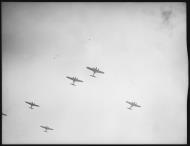
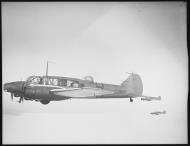
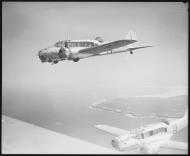
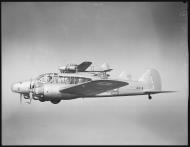
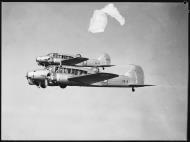
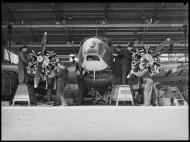
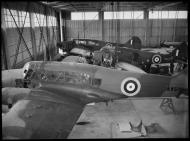
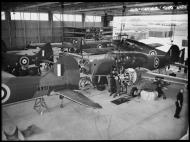
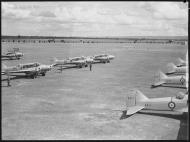
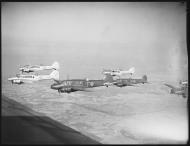
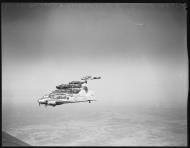


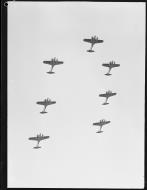
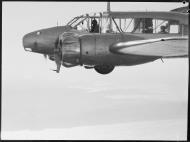
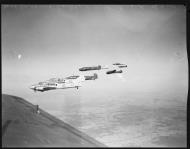
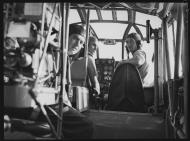
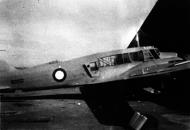

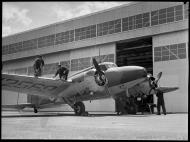
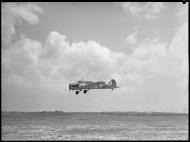
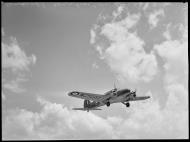
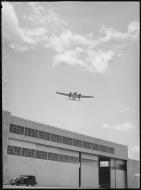
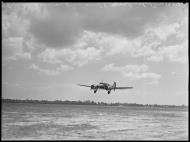
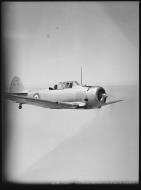
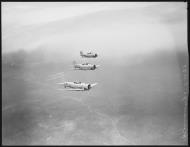

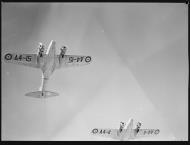
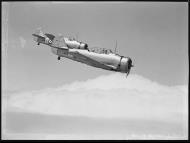
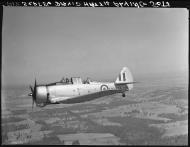
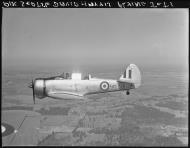
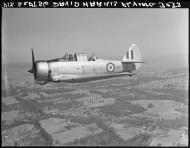
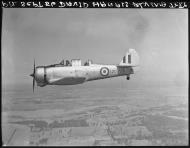
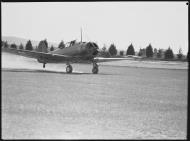
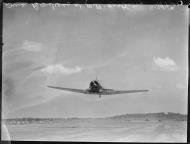
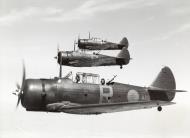
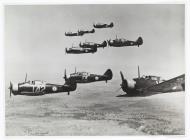
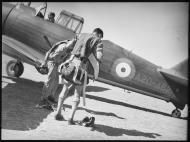
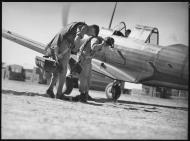
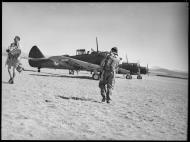
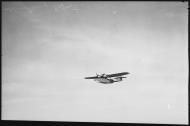
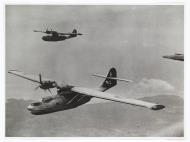
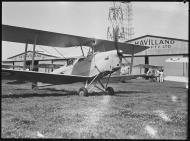
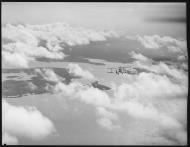
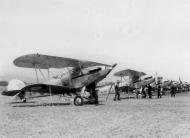

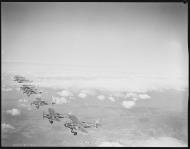

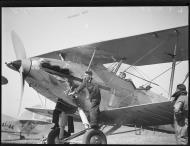
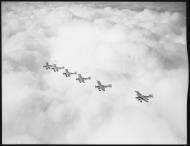

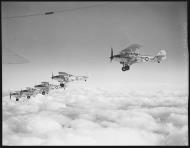
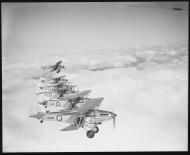
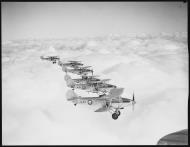
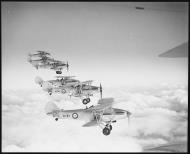
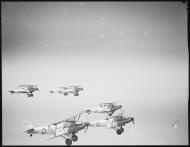
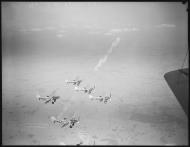


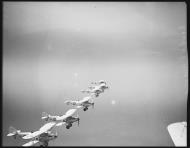
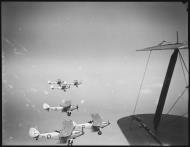
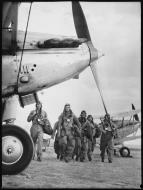
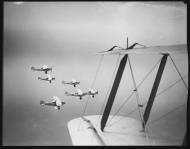
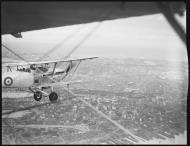
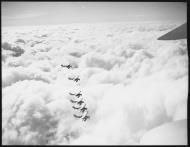

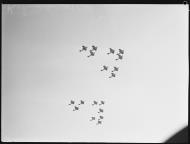
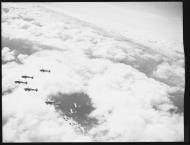
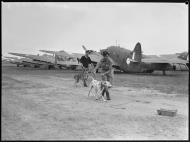
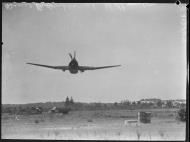

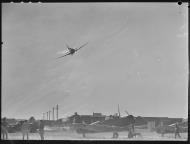
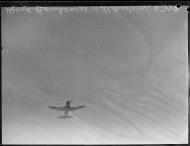
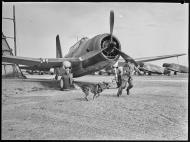

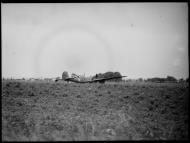
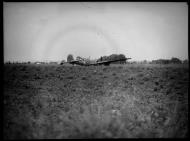
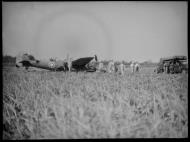
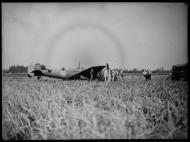
 Avro Anson's in RAAF service
Avro Anson's in RAAF service